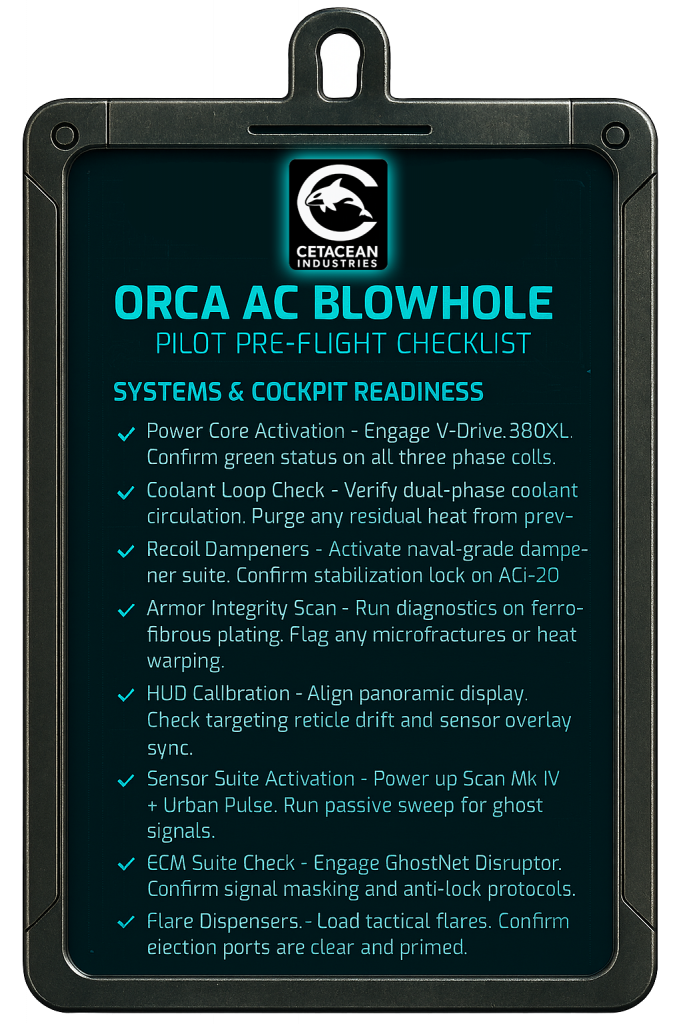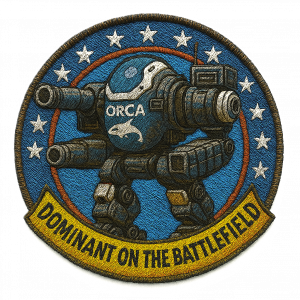Cetacean Industries Field Handbook: The ORCA-Class BattleMech
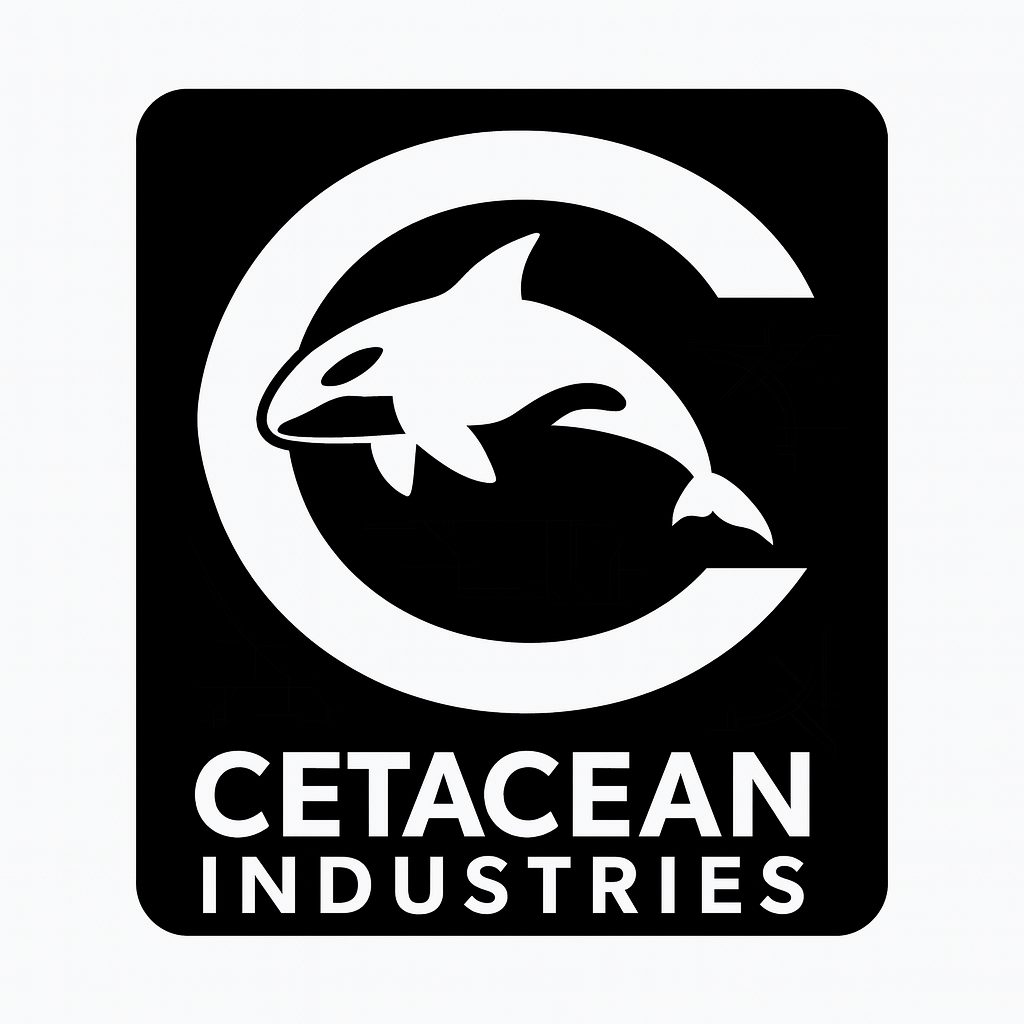
“We built the Orca not to compete, but to dominate.”
—Dr. Elian Voss, Chief Engineer, Cetacean Industries, 2767
Foreword from the Founders
Welcome! If you’re reading this, you’ve either bought, inherited, salvaged, or been entrusted with one of the rarest and most formidable BattleMechs ever produced under the Star League banner. The ORCA-Class is not just a machine. It’s a statement; a declaration of force, resilience, and engineering audacity. And Cetacean Industries is proud to bring it to you.
This handbook serves as your guide to understanding, operating, and respecting the legacy of the ORCA. From its origins in the turbulent twilight of the Star League to its battlefield resurrection by mercenary legends like Spectre Company, the ORCA remains a symbol of what small-scale innovation can achieve when unshackled from corporate orthodoxy.
Chapter I: Origins of a Leviathan
Cetacean Industries was founded in 2760 on the oceanic world of Thalassa, a Terran Hegemony frontier planet known for its naval engineering academies and deep-sea mining platforms.
Our founders, former SLDF engineers and naval architects, sought to apply maritime design principles to land-based warfare. The result was the ORCA, a 70*-ton modular BattleMech built for siege, suppression, and psychological dominance.
Unlike the mass-market designs of Defiance or General Motors, the ORCA was handcrafted in limited batches. Only 150 units of each variant are to be produced. Those who will pilot the ORCA know: this is no prototype. This is a predator.
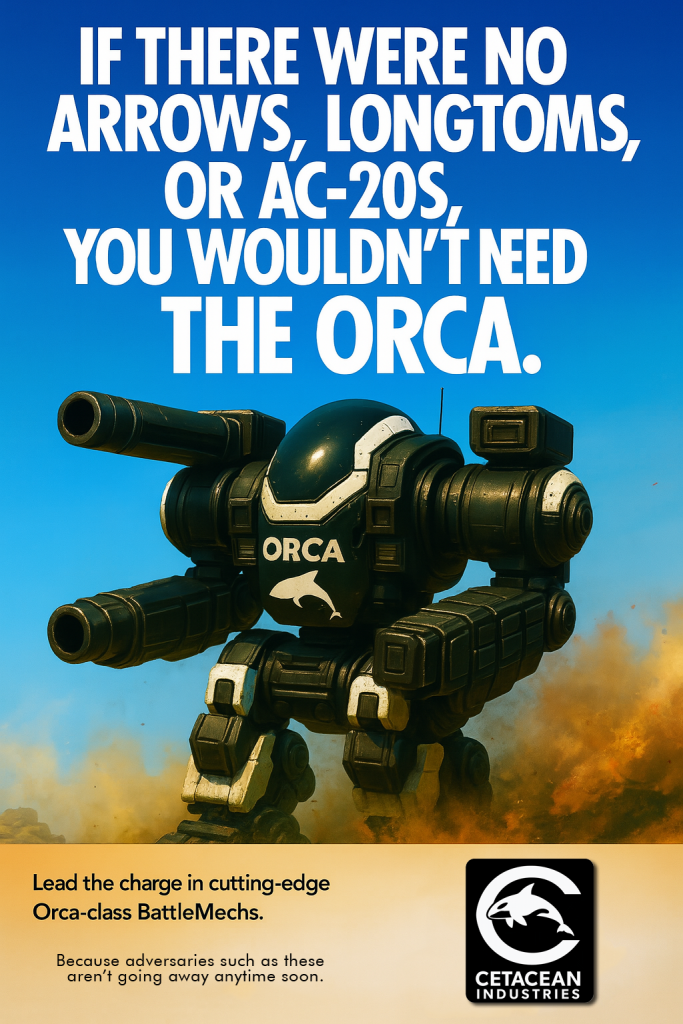
Core Specifications
Weight: 70+ tons (varies by variant)
Engine: Cetacean Vortex-500 Fusion Core
Armor: By Variant, between 10-15 tons of Cetacean “Abyssal Plate” composite armor
Structure: Endo-steel reinforced frame
Speed: 54 kph max (standard), 64 kph with overdrive mod (MASC on STORMPOD variant)
Heat Sinks: Varies with Variant
Cockpit: Dome narrow panoramic with dorsal sensor fin
(ORCA-AC BLOWHOLE shown, taken from early engineering document.)
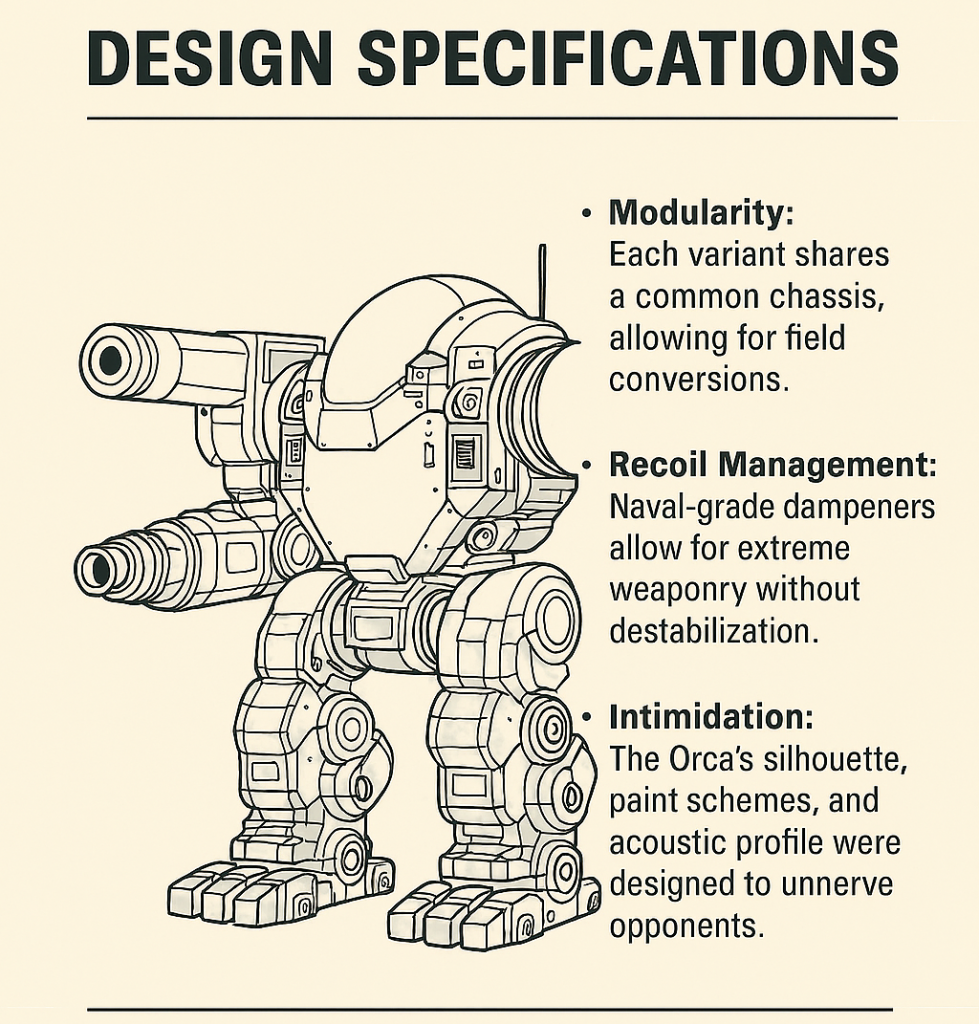
ORCA Variants
| ORCA-HG BLACKFISH Heavy Gauss Variant | ORCA-AC BLOWHOLE Assault Cannon Variant | Orca-LRMx STORMPOD Missile Variant |
| Armament: 2x Heavy Gauss Rifles 1x ER PPCs Role: Long-range sniper, fortress breacher Marketing Claim (2763): “Strike from the horizon. Shatter their command. The Blackfish doesn’t ask questions—it ends conversations.” Anecdote: During SLDF trials on New Earth, BLACKFISH scored a direct hit on a moving Marauder at 1,200 meters, severing its right leg and cockpit canopy in a single volley. The test observers recorded a 0.3-second delay between impact and structural collapse, giving it the nickname “Boss Gauss.” | Armament: AC-20 AC-10 Guardian ECM Role: Urban assault, base breacher Marketing Claim (2763): “When the walls come down, Blowhole walks in. One cannon. One purpose.” Anecdote: In the Siege of Kurohime Ridge, House Kurita’s Tai-sa Hiroshi Tanaka used BLOWHOLE to breach three bunkers in under 90 seconds. The AC-20’s kinetic force collapsed reinforced ferrocrete, and the flamers flushed entrenched infantry. Davion forces mistook the ORCA for a new Combine prototype and retreated in disarray. | Armament: 2x LRM-20 2x LRM 5 Role: Indirect fire, saturation bombardment Marketing Claim (2767): “Tempest doesn’t fire missiles. It writes obituaries.” Anecdote: During a simulated engagement on Poseidon’s Moon, Tempest used drone-assisted targeting to eliminate five light Mechs in a single coordinated salvo. The Cetacean LRM system achieved a 92% hit rate across 40 missiles, with minimal collateral damage. |
Demonstration: Operating the ORCA-AC Blowhole, Mk. II
(Note: Full operations manuals are kept by Cetacean Industries and can be made available by request. As most ORCA Mechs are heavily customized, our team is providing the most well-known items needed for ORCA pilots in several areas).
Startup Sequence
- Activate fusion core via dorsal ignition panel.
- Engage cockpit seal and pressure equalization.
- Run diagnostic on recoil dampeners and heat sinks.
- Calibrate weapon systems (variant-specific).
- Sync with battlefield command net or C3 node.
Maintenance Notes
- Heavy Gauss capacitors require recalibration every 10 shots.
- Artemis IV systems are sensitive to ECM interference. Use shielding.
- Armor plating can be replaced with modern composites.
- AC-20 recoil pistons must be inspected after each engagement. Ensure Freebold Stablizers are in ‘ON’ setting before firing weapons.
Pilot Tips
- Don’t underestimate the psychological impact. Enemy units often retreat when facing an ORCA.
- Use terrain to mask the ORCA’s silhouette. Its bulk is intimidating but visible.
- Coordinate with lighter units for spotting and flanking.
- Watch the heat from the ER PPCs!
